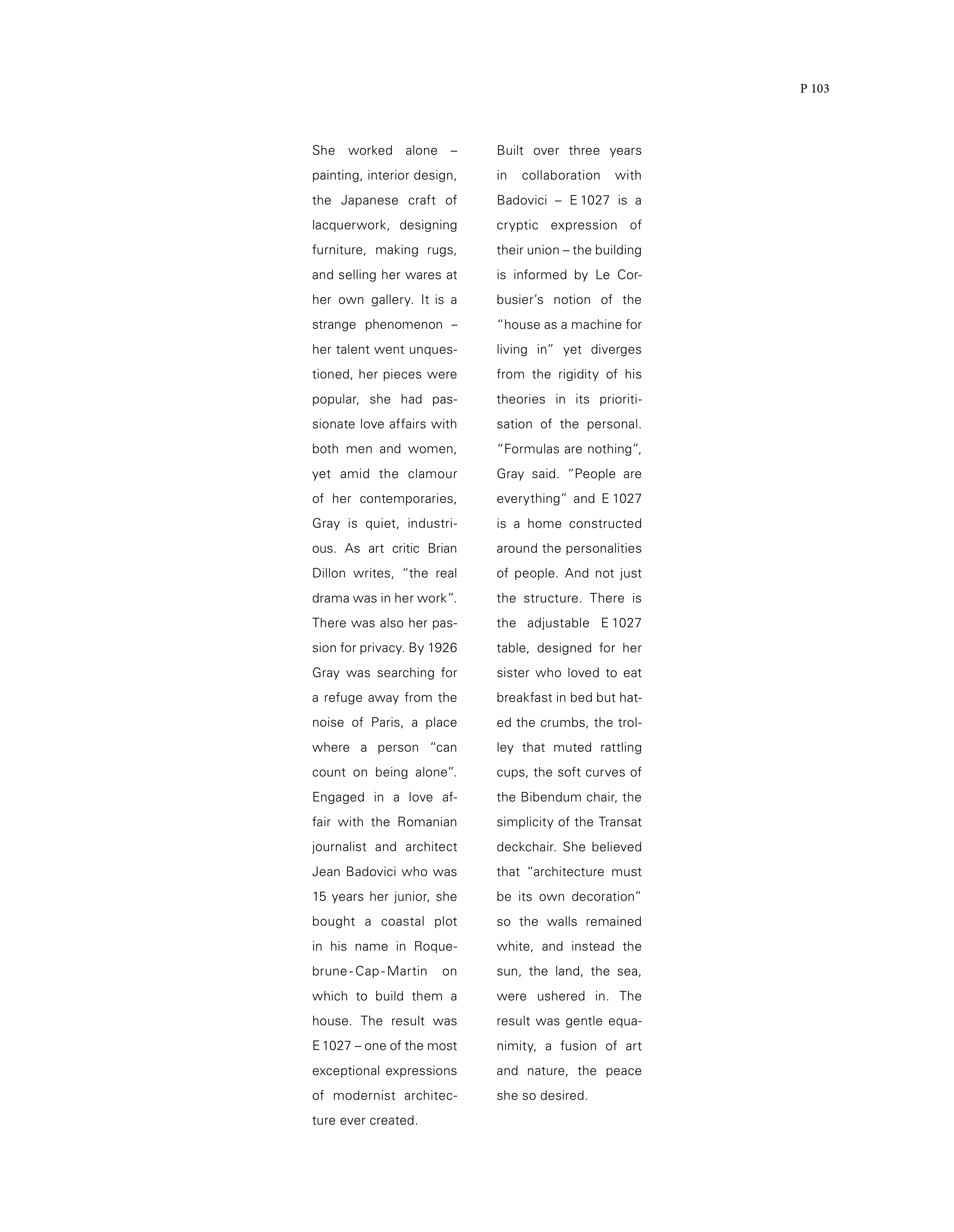She worked alone –
painting, interior design,
the Japanese craft of
lacquerwork, designing
furniture, making rugs,
and selling her wares at
her own gallery. It is a
strange phenomenon –
her talent went unques-
tioned, her pieces were
popular, she had pas-
sionate love affairs with
both men and women,
yet amid the clamour
of her contemporaries,
Gray is quiet, industri-
ous. As art critic Brian
Dillon writes, “the real
drama was in her work”.
There was also her pas-
sion for privacy. By 1926
Gray was searching for
a refuge away from the
noise of Paris, a place
where a person “can
count on being alone”.
Engaged in a love af-
fair with the Romanian
journalist and architect
Jean Badovici who was
15 years her junior, she
bought a coastal plot
in his name in Roque-
brune- Cap- Martin
on
which to build them a
house. The result was
E 1027 – one of the most
exceptional expressions
of modernist architec-
ture ever created.
Built over three years
in collaboration with
Badovici – E 1027 is a
cryptic expression of
their union – the building
is informed by Le Cor-
busier’s notion of the
“house as a machine for
living in” yet diverges
from the rigidity of his
theories in its prioriti-
sation of the personal.
“Formulas are nothing”,
Gray said. “People are
everything” and E 1027
is a home constructed
around the personalities
of people. And not just
the structure. There is
the adjustable E 1027
table, designed for her
sister who loved to eat
breakfast in bed but hat-
ed the crumbs, the trol-
ley that muted rattling
cups, the soft curves of
the Bibendum chair, the
simplicity of the Transat
deckchair. She believed
that “architecture must
be its own decoration”
so the walls remained
white, and instead the
sun, the land, the sea,
were ushered in. The
result was gentle equa-
nimity, a fusion of art
and nature, the peace
she so desired.
P 103


